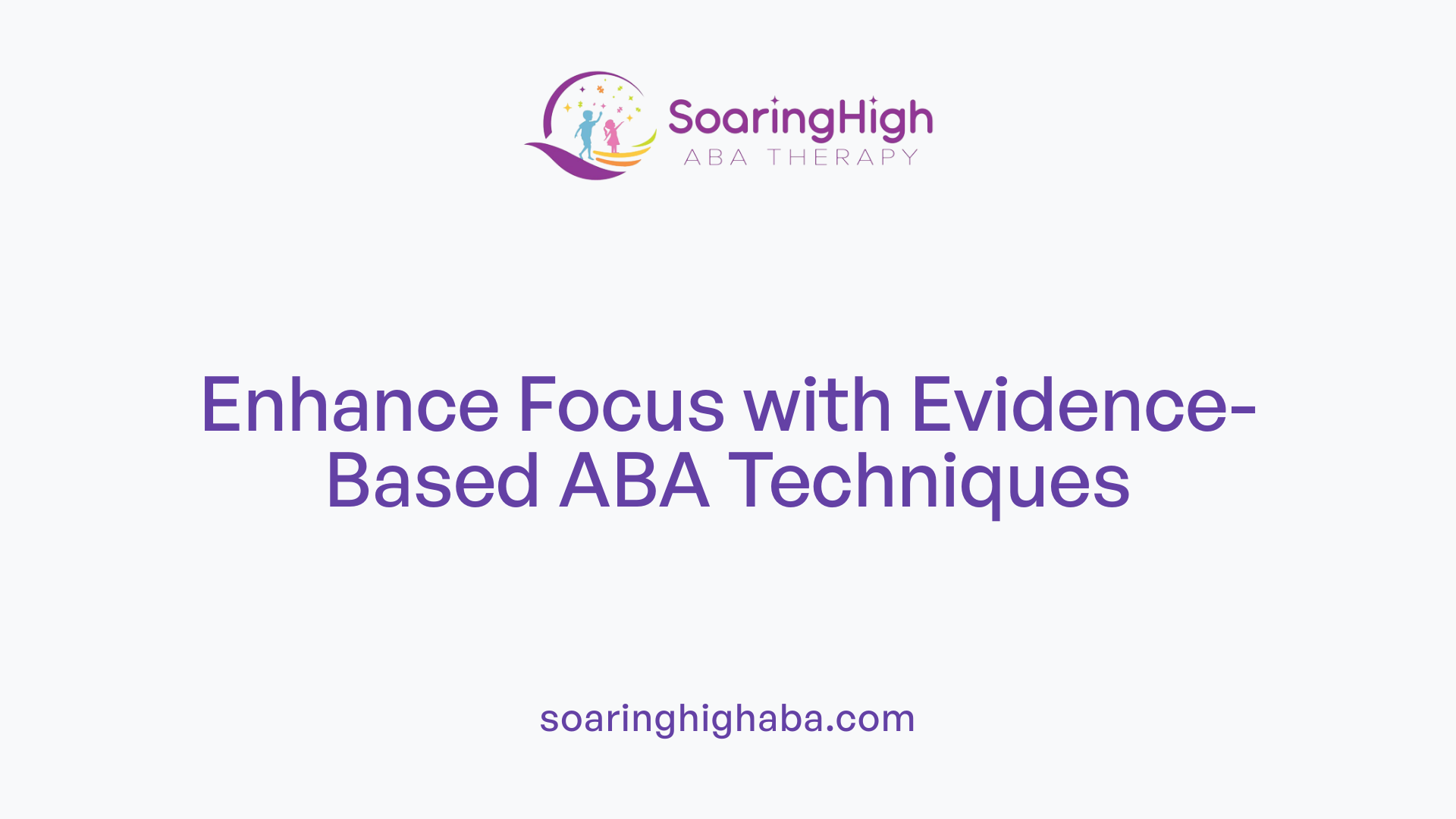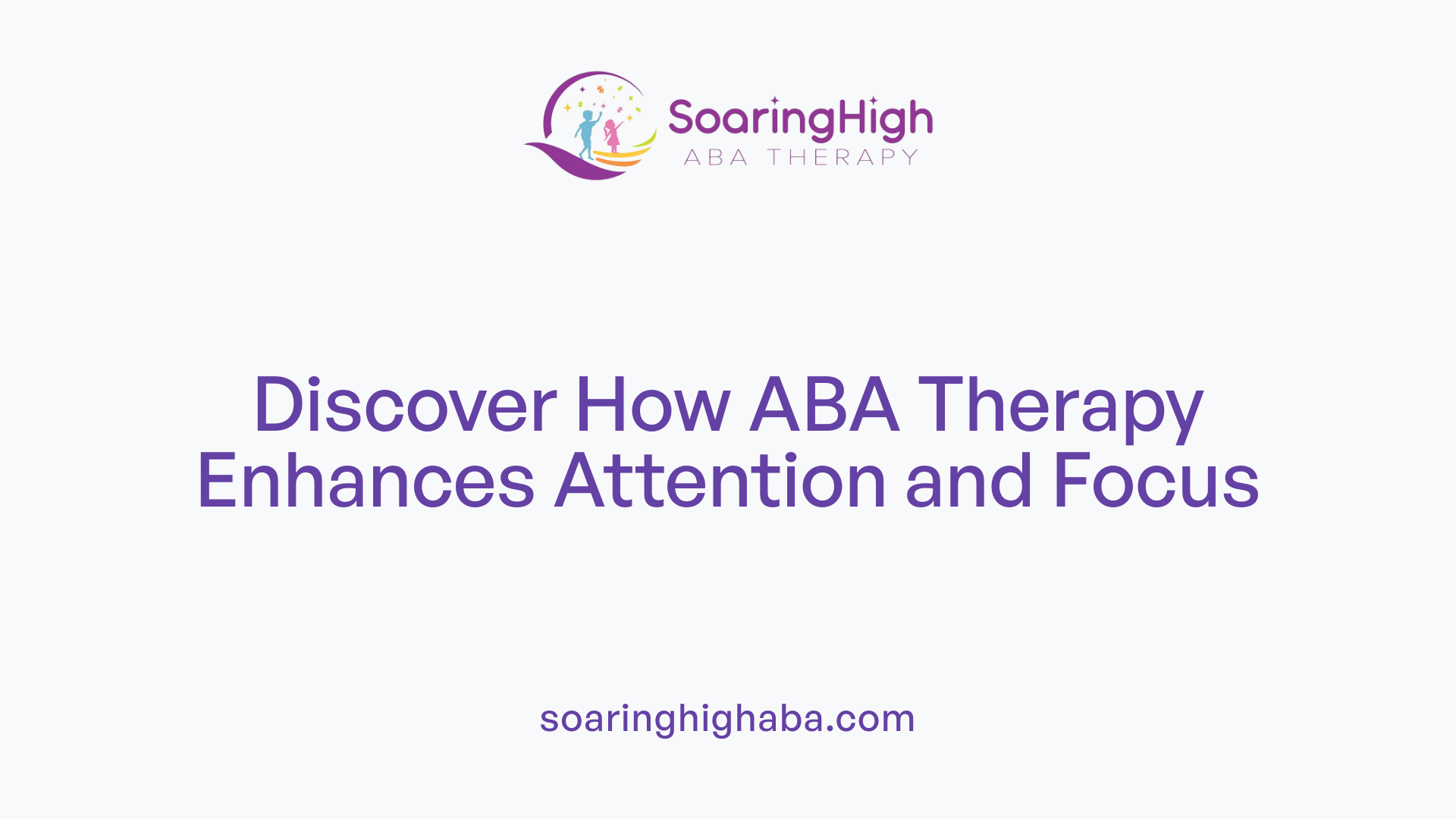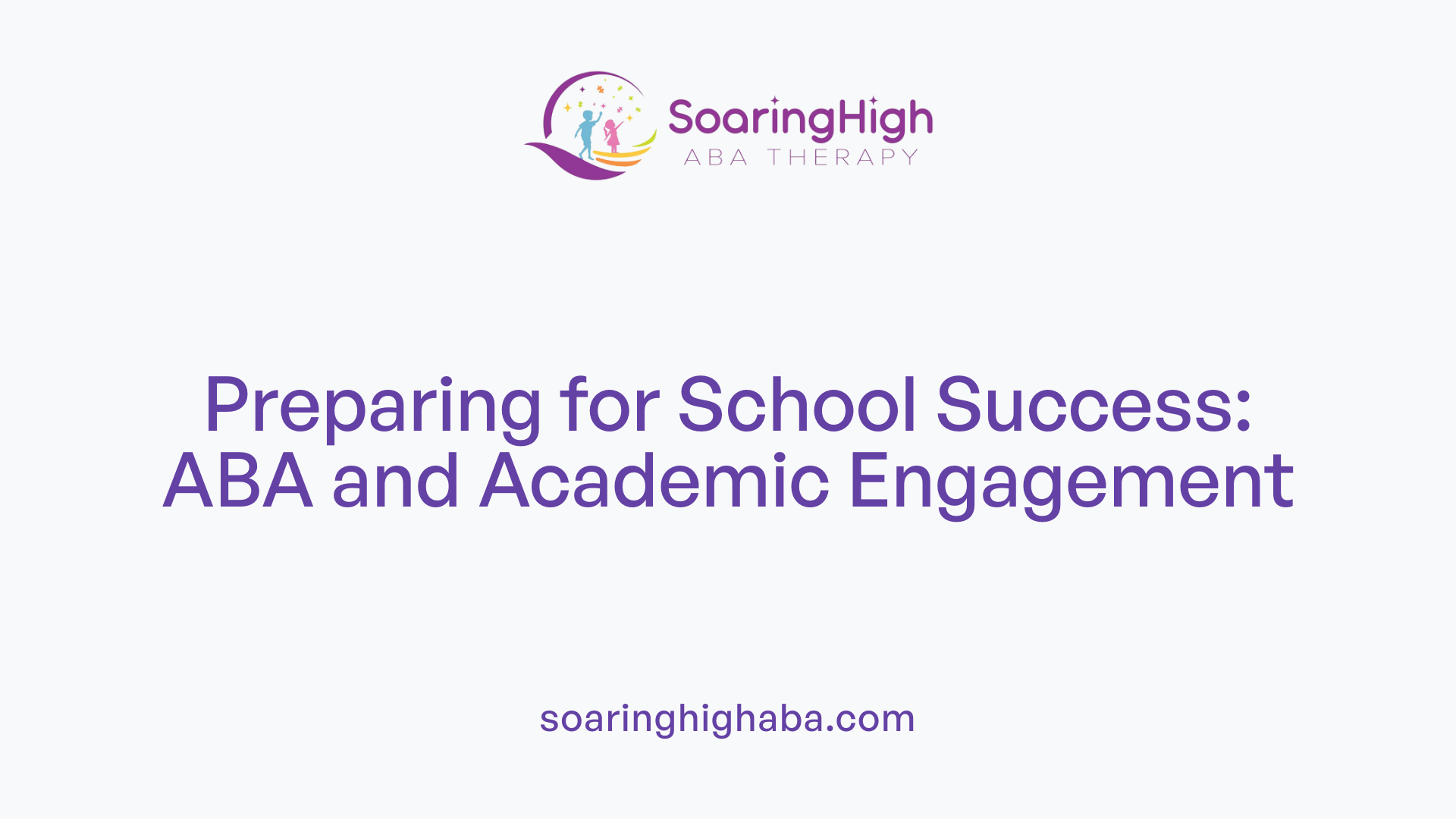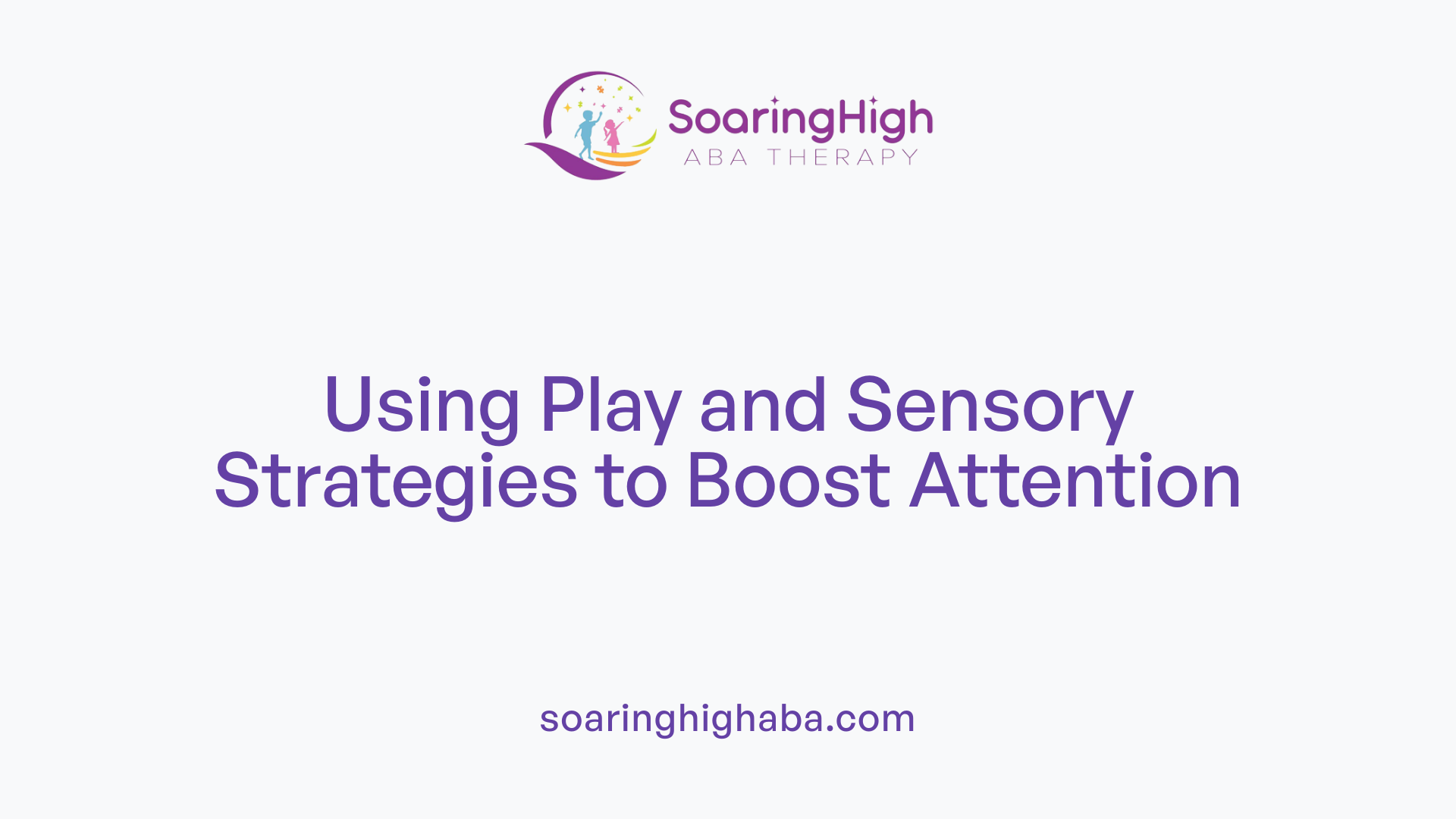Understanding How ABA Therapy Supports Attention and Focus
Applied Behavior Analysis (ABA) offers a scientific, tailored approach to enhancing attention and focus in children with autism Spectrum Disorder (ASD) and Attention Deficit Hyperactivity Disorder (ADHD). By utilizing evidence-based strategies, ABA therapy creates an environment conducive to sustained attention, helping children overcome inherent challenges related to sensory sensitivities, impulsivity, and task initiation. This comprehensive overview explores how ABA techniques address attentional difficulties, the benefits of these interventions, and their vital role in supporting school readiness and social participation.
Core Principles and Techniques of ABA in Improving Attention

How does ABA therapy help improve attention and focus in children with autism or ADHD?
ABA therapy enhances attention and focus by applying evidence-based strategies that motivate children to engage in learning activities. Reinforcement techniques, such as token boards and immediate praise, encourage children to sustain their attention for longer periods.
One effective method is prompting and modeling, where therapists guide children through tasks using visual or verbal cues, and then observe the child imitate or practice these behaviors. This step-by-step guidance helps children understand expectations and develop focus.
Task analysis breaks complex tasks into smaller, manageable steps, making it easier for children to follow through and maintain interest. Behavioral shaping gradually reinforces approximate behaviors toward the desired focus skills.
Structured routines and visual supports like schedules and checklists provide predictability, reducing anxiety and promoting consistent attention. Techniques like the Premack Principle set a sequence where children complete less-preferred activities before accessing preferred ones, boosting compliance and focus.
Furthermore, ABA emphasizes joint attention activities, where children learn to share focus on objects or events, which is crucial for social and communicative development.
Engaging activities—such as sorting, matching, or interactive games—are integrated with positive reinforcement to reinforce sustained attention. Combining these approaches creates a personalized learning environment that fosters concentration.
In summary, ABA therapy tailors interventions to each child's needs, encouraging attention through motivation, clear expectations, and supportive structures, thus improving their ability to focus on tasks at home, school, and social settings.
Strategies and Techniques Leveraged by ABA to Boost Focus

What techniques and strategies are used in ABA therapy to improve attention and focus?
ABA therapy incorporates a variety of evidence-based techniques designed to help children enhance their attention and focus skills. One fundamental approach is positive reinforcement, where desired behaviors—such as sustained attention or task completion—are rewarded. This encourages children to repeat these behaviors, gradually increasing their ability to concentrate.
Another effective strategy is task analysis. This involves breaking down complex activities into smaller, manageable steps, making it easier for children to focus on each part without feeling overwhelmed. For example, when teaching a child to tie their shoes, the task is segmented into multiple smaller steps, each reinforced individually.
Structured routines and predictable schedules are also crucial in ABA therapy. By establishing consistent daily routines and incorporating regular work-break intervals, children experience less anxiety and distraction. Routine provides familiarity, helping to foster a sense of security that enhances their ability to maintain attention for longer periods.
Differential reinforcement of behaviors involves rewarding specific behaviors while withholding reinforcement for undesired actions. This technique helps promote on-task behavior by emphasizing what the child should do instead of what they shouldn’t.
Self-management training is a proactive method where children are taught to regulate their own behavior. Through visual supports, checklists, or timers, children learn to recognize when their attention wanes and to employ strategies like taking breaks or redirecting their focus independently.
By combining these techniques—along with tailored interventions such as visual supports, environmental modifications, and behavioral shaping—ABA therapy systematically works to improve attention span and focus. The ultimate goal is to foster independence and positive habits, empowering children to succeed both academically and socially.
Understanding How Autism Challenges Attention and How ABA Addresses Them

How does autism affect attention, and how can ABA therapy address these challenges?
Autism Spectrum Disorder (ASD) can significantly influence a child's ability to concentrate and stay attentive. Children with autism often struggle with sustaining attention on tasks, filtering out irrelevant stimuli, and shifting focus from one activity to another. These difficulties can hinder their learning, social interactions, and daily functioning.
Sensory sensitivities are common in children with autism, leading to sensory overload in stimulating environments. Overstimulation can make it even harder to concentrate and stay calm. Additionally, co-occurring issues like ADHD can further exacerbate attention problems.
ABA (Applied Behavior Analysis) therapy offers practical strategies to improve these attention challenges. It employs structured routines, breaking down complex tasks into smaller, manageable steps through task analysis. Using positive reinforcement, children are encouraged to maintain focus and complete tasks. Visual supports like schedules, token boards, and timers help children understand expectations and reduce anxiety.
Specialized approaches, such as Attention Autism, incorporate engaging, play-based activities that tap into children's interests. These activities use visual and sensory stimuli to promote sustained attention and enhance social communication.
Overall, tailored ABA interventions focus on teaching children self-regulation and attention skills. They help children with autism to improve their ability to focus, remain engaged in activities, and transition smoothly between tasks, improving both learning outcomes and social interactions.
Benefits of ABA Therapy in Enhancing Attention and Focus

What are the benefits of ABA therapy in increasing attention and focus in children with autism?
ABA therapy provides numerous advantages for children with autism who struggle with attention and concentration. One of its primary strengths is its ability to deliver tailored, structured interventions that break down complex tasks into simpler, manageable steps. This approach allows children to experience success at each stage, gradually building their ability to focus.
A core strategy within ABA is the use of positive reinforcement and reward systems. These motivate children by immediately acknowledging their efforts and successes, fostering sustained engagement in various activities. Token boards are often used as visual reinforcement tools, providing tangible incentives that encourage children to maintain attention and follow through on tasks.
Furthermore, ABA introduces self-monitoring and self-control practices. These skills empower children to recognize moments when their attention wanes or when they become impulsive. By learning to self-correct, children can better regulate their behavior and stay engaged, which contributes to improved focus.
Creating predictable routines through task analysis helps reduce anxiety and enhances concentration. When children know what to expect and understand the sequence of activities, they are more likely to remain attentive, especially during transitions or new tasks.
Overall, ABA therapy not only boosts attention and focus but also supports crucial development in social skills, communication, and behavior. These improvements collectively help children navigate their daily environment more effectively, fostering independence and overall well-being.
Supporting School Readiness and Academic Engagement with ABA

How do ABA and related strategies support attention, focus, and school readiness?
Applied Behavior Analysis (ABA) employs a variety of evidence-based techniques that help children develop crucial skills needed for school success. Through structured routines, reinforcement, and task analysis, ABA training improves attention span, following instructions, and understanding classroom expectations.
One of the main strategies involves creating engaging activities. Matching games, storytelling with interactive elements, and motor skill exercises keep children motivated while fostering cognitive and social skills. These activities are designed to gradually increase the child's ability to stay focused on tasks.
Behavioral interventions targeting challenging behaviors are also vital. By reducing disruptive or impulsive behaviors, children can participate more comfortably and confidently in classroom activities. This prepares them for a smoother transition into structured learning environments.
ABA strategies are tailored to individual needs and often incorporate visual supports, such as picture schedules and token boards, which serve to provide clear reminders and motivate continued engagement.
Structured routines and reinforcement
Establishing predictable routines helps children anticipate what comes next, reducing anxiety and encouraging compliance. Reinforcement systems, like token boards, reward desired behaviors immediately, making it clear what the child is working toward.
Visual supports and activity planning
Visual supports clarify expectations and break down complex tasks into manageable steps. Visual schedules or activity plans with pictures or symbols foster independence and help children understand what they are expected to do, enhancing their ability to focus.
Reducing distractions in learning environments
Minimizing environmental distractions, such as noise or clutter, helps children concentrate better. Creating dedicated, sensory-friendly spaces with calming tools like weighted blankets or fidget toys supports attention, especially for children sensitive to sensory overload.
Behavioral strategies for classroom success
Strategies such as the Premack Principle (
The Role of Play and Sensory Strategies in Improving Focus

How can play and sensory strategies support attention and focus in children with autism?
Engaging children with autism in play activities they find enjoyable can be highly effective in promoting shared attention and enhancing overall focus. Play activities like sorting objects, building with blocks, matching games, and storytime with interactive elements provide structured opportunities for children to practice attention in a fun and motivating way.
Sensory integration techniques are also crucial. These strategies involve providing calming sensory responses tailored to each child's needs. For example, tools such as weighted blankets, fidget toys, sensory bins, and calming visual stimuli can help regulate the child's sensory systems. Addressing sensory sensitivities reduces distractions caused by sensory overload, making it easier for children to concentrate.
Creating a sensory-friendly environment further supports focus. This involves reducing noise levels, controlling lighting, and offering calming sensory tools within the child's immediate environment. Such adjustments help minimize overstimulation and improve the child's ability to stay attentive.
In addition, incorporating regular physical activity and movement breaks aligns with spaced learning principles. Activities like outdoor play, exercise breaks, and sensory-motor tasks help children release stress and excess energy. These breaks support better memory, concentration, and overall attention capacity.
Combining these strategies—play, sensory integration, a calming environment, and movement—can significantly improve the ability of children with autism to focus on tasks and participate more effectively in learning and social activities.
The Transformative Impact of ABA on Attention and Development
ABA therapy’s tailored, evidence-based strategies are essential in addressing the attention challenges faced by children with autism and ADHD. Through reinforcement, structured routines, sensory management, and engaging activities, ABA promotes sustained attention, social engagement, and independence. These improvements not only support academic success and classroom participation but also contribute significantly to overall development and well-being, empowering children to reach their full potential.
References
- ABA Therapy for ADHD: Strategies to Improve Focus & Behavior
- How Autism Affects Focus and Attention - Steady Steps ABA
- Improving Attention Span in Autism Through School Readiness ...
- Effective Strategies for Autism & Attention Span Improvement
- 10 Effective Tips to Help Focus with Autism - Astra ABA
- FOCUS ABA Therapy Tips to Tackle Problem Behaviors
- How ABA Therapy Promotes School-Readiness Skills - Quest, Inc.
- Improving Attention Span in Autism Through School Readiness ...
- ABA Therapy and School Readiness - Inner Circle Autism Network
- Key School Readiness Skills Developed Through ABA Therapy





































































































